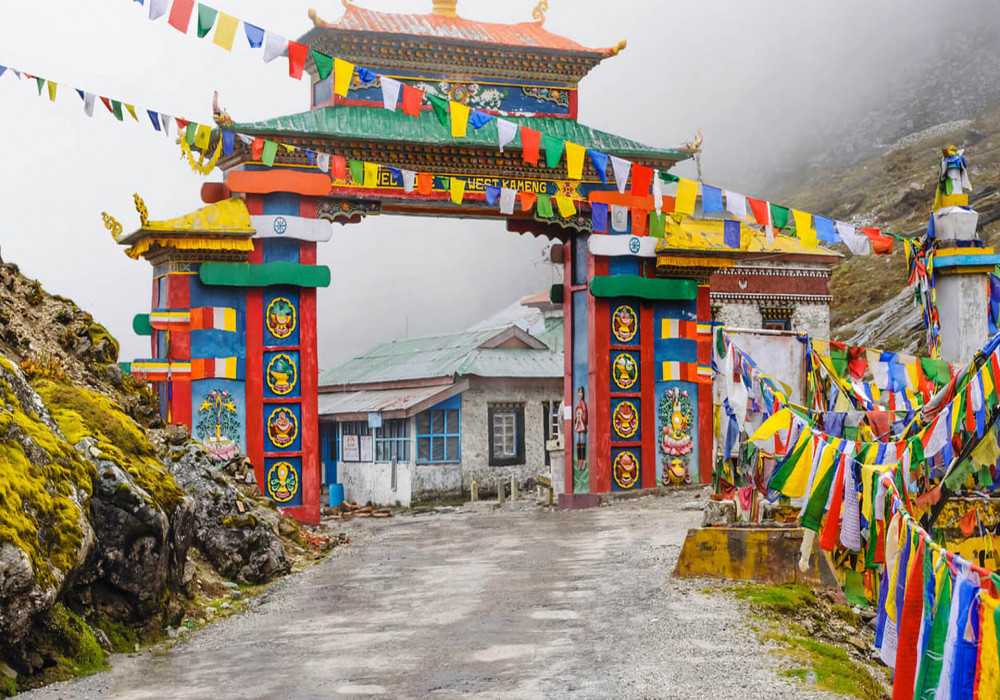
The best time to visit Arunachal Pradesh is during the spring and autumn seasons, which span from March to May and from September to November, respectively. During these months, the weather is pleasant with mild temperatures and clear skies, making it ideal for outdoor activities such as trekking, sightseeing, and exploring the natural beauty of the region.
Spring brings blooming flowers and lush greenery, creating a picturesque backdrop for travelers. Autumn, on the other hand, offers stunning views of colorful foliage as the leaves change colors, especially in the higher altitudes of the state.
These seasons also coincide with several cultural festivals celebrated across Arunachal Pradesh, providing visitors with the opportunity to witness traditional dances, music performances, and local customs. The Losar festival, celebrated by the Monpa tribe, and the Torgya festival, celebrated by the Monpa and Sherdukpen communities, are some of the major festivals during this time.
Avoid visiting Arunachal Pradesh during the monsoon season, which lasts from June to August, as heavy rainfall can lead to landslides and road closures, making travel difficult and hazardous. Similarly, winter months from December to February can be cold, especially in the higher altitudes, with temperatures dropping below freezing point.
Overall, spring and autumn offer the most comfortable weather conditions and vibrant cultural experiences, making them the best time to visit Arunachal Pradesh for a memorable and enjoyable trip.
Are you planning your visit to India! We are here to make your journey more exciting and enriching experience. Still you have to be prepared for the unique challenges and cultural differences you may encounter here. Below are some tips that will make your India visit more enjoyable and hassle-free:
Research and Plan Ahead: India is a country where you find a vast diversity everywhere including it’s a rich history and culture. So it is really important to research your destinations, attractions, and local customs before you finalize your trip.
Obtain Necessary Documentation Before starting your trip make sure you have double checked your all required documents including a valid passport, visa, and any other permits or certifications required for your specific activities or destinations.
Pack Accordingly Try to pack lightweight luggage with comfortable clothing which is suitable for the climate and culture of destination or place you are visiting. Also include some essential like sunscreen, insect repellent, and any prescription if you are medications.
Stay Hydrated and Eat Wisely: Try to eat healthy food and only drink clean water(Bottled water recommended). Try food only from reputable street food vendors or restaurants and consume freshly cooked items to avoid food poisoning.
Stay Safe: In general India is safe for tourists, but it is necessary to remain vigilant in crowded area or streets markets where petty theft and scams can occur. It is also suggestable to keep your belongings wisely and avoid interacting with strangers.:
Respect Local Customs and Traditions: India has cultural diversity various customs and traditions. Here, it is advisable to respect the local custom and dress modestly, and follow the religious or cultural practices like removing your shoes before entering temples or mosques.:
Use Reliable Transportation: It is highly recommended to opt for reputable transportation options like pre-paid taxis along with driver, trains, or well-known ride-sharing services to ensure safety and reliability.
Bargain Wisely: You are visiting India then you must try street shopping, but it is also necessary to bargain before buying from street vendors. You must negotiate with them politely and be ready to walk away if the price seems high.
Stay Connected: Before visiting you must activate an international roaming plan to stay connected during your trip. This will also help you in navigation, communication, and emergencies.
Embrace the Chaos: While visiting India, you make experience the chaotic, noisy, and overwhelming at times, but it’s come with a new experience and add value in your trip. Try to embrace the lively energy and variant culture that make India truly unique.
By following above tips, you can have a pleasing and memorable experience exploring the diverse landscapes, rich history, and vibrant culture of India.

Inspire you to explore India tours beyond the usual well-known locations.
Lorem ipsum dolor sit amet, consectetuer adipiscing elit. Aene an commodo ligula eget dolor. Aenean massa. Cum sociis the
Served 50000+ Happy Customers From All Over The World !

Plan your day by day itinerary for your vacation with Private Car and Driver or Tour Packages.
Yes, certain areas of Arunachal Pradesh require permits, especially for foreigners. Inner Line Permit (ILP) or Protected Area Permit (PAP) may be required depending on the area. Indian citizens need an ILP, while foreign nationals require a PAP.
The best time to visit Arunachal Pradesh is during the spring and autumn seasons, from March to May and September to November, respectively. These months offer pleasant weather and clear skies, ideal for outdoor activities and sightseeing.
Transportation within Arunachal Pradesh mainly consists of taxis, shared jeeps, and buses. However, road conditions can be challenging in some areas, and services may be limited, so plan your travel accordingly.
It's advisable to carry necessary medications, especially if you have specific health conditions. Be prepared for limited medical facilities, especially in rural areas, and consider purchasing travel insurance for emergencies.
Yes, Arunachal Pradesh celebrates various cultural festivals throughout the year, showcasing its rich heritage and traditions. Festivals like Losar, Torgya, and Ziro Music Festival are popular among locals and tourists alike.
Yes, Arunachal Pradesh offers excellent trekking opportunities amidst its scenic landscapes and Himalayan ranges. However, some treks may require permits, and it's advisable to hire a local guide for safety and navigation.
Arunachal Pradesh is home to several iconic attractions, including Tawang Monastery, Sela Pass, Namdapha National Park, Ziro Valley, and Bomdila Monastery, each offering unique cultural and natural experiences.
While photography is generally permitted in most areas, it's essential to respect the privacy and customs of the indigenous tribes. Always seek permission before taking photographs, especially in tribal villages and during cultural events.